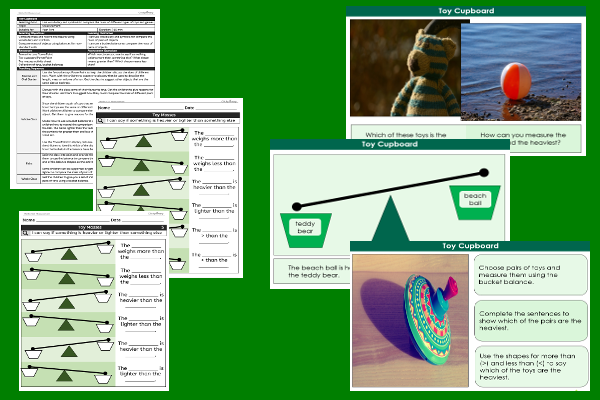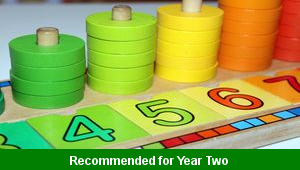Lesson One – Toy Cupboard

This maths teaching pack for Key Stage One gets the children to identify and model how select and use vocabulary words and symbols to compare the mass of different types of toys and games.
The class can use a bucket balance to help measure and compare the mass of different pairs of objects so that they can be differentiated between heavy and light mass sizes.
Download this teaching pack including a lesson plan, classroom activities and an interactive presentation to identify and model how select and use vocabulary words and symbols to compare the mass of different types of toys and games
Activities in this teaching pack include a differentiated set of worksheets to record how to use vocabulary words and symbols to compare the mass of different types of toys and games on a bucket balance to match the words heavier and lighter using pictorial diagrams.
The interactive presentation gets the children to explore how to use vocabulary words and symbols to compare the mass of different types of toys and games.
This lesson is part of a maths scheme of work to get the children to estimate, measure and compare the mass of different sized objects using standard units of measurement for grams and kilograms. There are teaching activities for shared learning, differentiated worksheets to support independent learning and interactive presentations to introduce concepts and key skills.
-

Number Order
Identify and record the sequence of a selection of two digit numbers by the place value of their numerical digits when representing their order using concrete equipment and diagrams
-

Number Lines
Identify and record the position of a range of two digit numbers on different sized scales that extend from zero to one hundred place values
-

Number Words and Digits
Match, compare and order a range of different two digit numbers that have been written in both words and digits from the smallest to biggest values
-

Number Frames
Explain and model how to use pictorial diagrams to represent the values of different numbers to one hundred that have been listed in both words and digits
